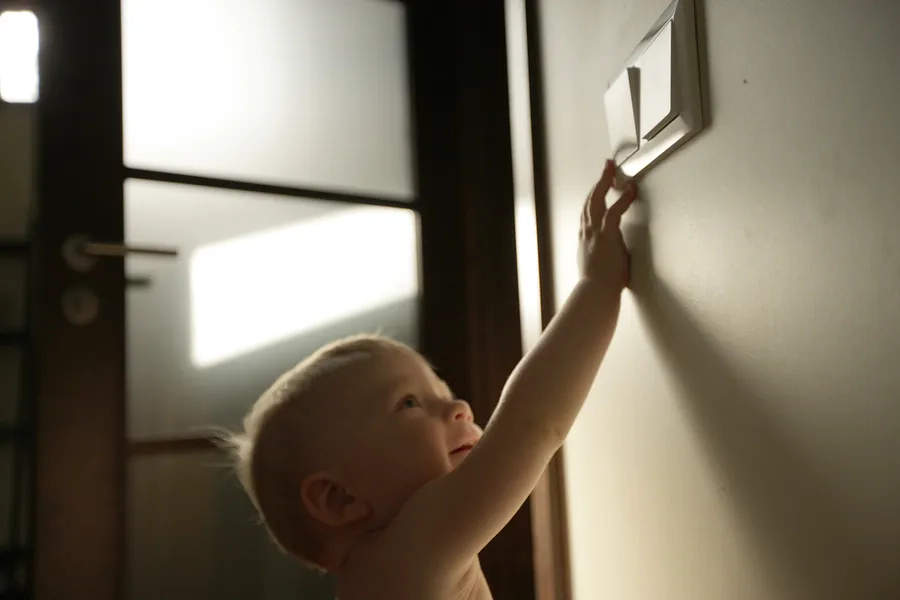Essential Advice for Helping Your Baby Sleep Through the Night

Newborn babies sleep – a lot. The typical newborn sleeps between 16-17 hours each day, even though it may not seem that way for new parents. The issue isn’t the amount of sleep, but the irregularity of it. Baby sleep cycles are shorter, but increase in length as they get older. At 6-8 weeks, most babies start sleeping for longer periods at night. And by the time they’re 4 months old, they should be capable of sleeping 8-12 hours a night. So why are there kids who sleep through the night at 5 weeks, while others can’t sleep straight through right into toddlerhood? Here are 15 things to know about getting your child to sleep through the night at (almost) any age.
15. Newborns
Newborn babies sleep for 2-4 hours, every 2 hours. Day or night. Don’t fight their urge to nap. If you wait longer than two hours, you may find yourself stuck with an overtired, fussy baby. By 2 weeks old, you can help your baby distinguish between day and night. Play and interact as much as possible during the day. But when nighttime comes, lower the lights, keep the house as quiet as you can, and maintain a calm energy.
14. Ambience
Babies like specific sounds. Whether it’s the sound of a human heart beat or a babbling brook, those sounds have been known to help newborns relax. Try using a white noise machine, or download an app on your phone. Additionally, newborn babies should be swaddled. Swaddling relaxes them because it feels like they are still safe and cozy inside the womb. Calm and gentle music can also lull them to sleep, as will a nighttime mobile or music machine attached to their cribs.
13. Signs
Try to spot the telltale signs of tiredness before it’s too late and your baby gets passed the point of no return. Aside from yawning, your baby may start rubbing their eyes, pulling on their ears or closing their fists. Jerky arm and leg movements are like twitches indicating they want to sleep. Difficulty focusing, fluttering eyelids, and even eyes rolling or crossing are also signs. That seven-mile stare? When they zone out, they’re getting ready to fall asleep.
12. Timing – Part 1
Once you have taught your baby to distinguish between day and night, stick with the program. If your baby falls asleep during a daytime feeding, try to gently rouse them. If they wake up and want to play in the middle of the night, keep the lights low and try not to engage. Sleep habits are learned, so it’s best to put your baby down when they’re drowsy but still awake. Consistency is key. If your baby needs to be soothed to sleep, expect to soothe them to sleep. If your baby can only fall asleep while feeding, prepare yourself to feed your baby to sleep.
11. Timing – Part 2
Once your baby is around 3 months old, depend less on sleepiness signs, and more on schedules. Set nap times and bedtimes and try to stick to them. Regulate your baby’s sleep patterns as best you can, by sticking with a schedule that suits your family best. In some cases, a first-born child may have an earlier and more rigid bedtime than younger siblings. In others, that single baby will be carted around from place to place and left to sleep when it’s convenient.
10. Wake Up
In order to help set your child’s sleep clock, don’t hesitate to wake them up if you feel they’re sleeping in too late. You want your baby on a sleep/wake schedule that is easy to stick to and that works! Allow babies to recharge with naps throughout the day. Don’t be afraid to wake them from naps if they’ve slept for too long. Always remembering that an overtired baby will have a hard time falling asleep.
9. Make Peace with the Pacifier
The pacifier can be a godsend for fussy babies and cranky parents. For some babies it helps to soothe them to sleep. Some experts say using a pacifier at night can even reduce the risk of SIDS (Sudden Infant Death Syndrome). However, until 8 months of age, most babies don’t have the fine motor skills necessary for finding the pacifier and putting it back in their mouths. So if your child does use a pacifier to fall asleep, either be prepared to go into the room in the middle of the night to hunt down the pacifier, or let your baby cry it out.
8. Midnight Snacks
For some babies, the only way to fall asleep is on the breast or bottle. Once they get older however, you may find your baby feeds for only a few minutes before passing right out. In other words, they don’t “need” the feed, but just like the soothing element. Try to wean your baby off of the night feedings by reducing the amount, followed by the actual number of feeds. Once they realize the kitchen is closed, they may just hit the sack.
7. Routine
Setting a bedtime routine will help your child understand that the end result is sleep. Some parents start with a warm bath, followed by reading, singing or cuddling. Put toys away and speak quietly and soothingly to your child. Try turning off overhead lamps and keeping the lights – and the volume – low. Following the same routine in the same place will help settle your child. Remember, some kids needs only a few minutes, while others require a little longer to settle down.
6. Siblings
Many parents with older children will race into the baby’s room before the infant wakes the siblings. Why not try preparing the older sibling(s) first? Warn them that their younger brother or sister may cry but that it’s OK. If both kids wake up, soothe the older child first as they are more likely to fall back asleep faster. You’ll also be giving your baby a chance to learn how to soothe themselves.
5. Cry it Out
Also known as Ferberizing, so called because of Pediatrician Richard Ferber’s sleep training method, the “cry it out” approach assumes a baby will learn to fall asleep on their own, if given the chance. In other words, if your child needs to be rocked/nursed/cuddled to sleep, they will require it every time. If your baby learns to self-soothe, they can use that skill when they wake up in the middle of the night (which we all, even as adults, do). This method calls for parents to wait progressively longer between check-ins.
4. No Tears
Some people simply cannot abide the idea of allowing their baby to cry it out. They believe that cry-out techniques can give your baby negative associations with sleep that can last for years. These advocates suggest that a more gradual method is better. They promote a child-centered approach that is tailored to your own child’s needs. Co-sleeping, cuddling, rocking and being physically close can help your baby fall asleep. They suggest following your child’s cues for what works best for them.
3. Fade Out
Fading or camping out, is a somewhat gentler version of the cry it out method. This method involves “camping out” and timed check-ins, reassuring your child with your presence. To camp out, sit close to your baby’s crib to soothe them, moving your chair a little further away each night. For timed check-ins, soothe and leave you child every five minutes until they fall asleep. For both, repeat as needed. It should get easier over time.
2. Know What to Expect
Just because you know a baby who sleeps through the night by 5 weeks, doesn’t mean your child should. Each baby is different. Nighttime sleep begins to solidify by 6-8 weeks. Between 3-5 months you will see a schedule forming, and there is no reason not to start sleep training by 6 months old. There will be periods of sleep-regression caused by growth spurts and/or developmental milestones, so do not fret, just go back to whatever worked before. If by the age of 12 months your baby isn’t sleeping through the night, you may want to call your doctor or consult a sleep specialist.
1. Know What Works
No one strategy works for one baby. You will need to know and understand your child and to be flexible. It is impossible to change your child’s sleep patterns without putting in the time. While consistency is key, some parents will try every method in every book they can find. Find the right balance between being too available and too removed that works for your baby, and for you! And above all, don’t be too hard on yourself. Eventually, all kids will sleep through the night.





















